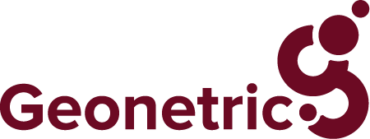What happened with iOS 14?
To understand the aspects of Apple’s iOS 14 update, and how it impacts marketers, we first have to understand what IDFAs are.
What is an IDFA?
IDFA stands for “Identifier for Advertisers” and is Apple’s persistent ID that gets assigned to individual Apple devices (iPhones, Apple TV, iPad, etc.).
This identifier allowed Apple and, subsequently, advertisers within their platform to create a more personalized experience across apps based on user behaviors. For marketers, this allowed for a more optimized campaign initiative because we can target users a lot more specifically based on their actual behaviors and interests.
When coupled with cookies around the web, these IDFAs — which also allowed frequency capping, campaign performance metrics, app installs, and attribute impressions — we were able to create truly robust identity graphs which could be used for advertising.
Changes to IDFA in iOS 14
So what changed? With the iOS 14 update the IDFA technology went from opt-out and opt-in. The change seems minor on the surface but it aims to recognize a complaint we’ve been hearing for many years.
Consumers have been frustrated with data security because the conditions of their data are buried in the depths of terms and conditions and user agreements. Typically by logging into a platform you’re giving them certain permissions by default, unless you specifically opt out. The iOS 14 update will require users to opt IN to the IDFA technology, which we estimate will be very few.
This change will remove the ability to share user or device-level data with advertisers. Apple will retain full control over any attribution data passed back to ad networks and the data they will pass is minimal. Ad networks can now plan to receive:
- Click-based attributes
- 100 Campaign IDs per ad network
- Batched conversions with a latency of 24-48 hours
- Removal of the date stamp parameter
- A single, fixed attribution lookback window
- Limited probabilistic data
- Deferred deep linking
- Limited demographic data
How will this impact advertising?
It’s difficult to know the exact impact this will have in the long-term, as things are still changing rapidly.
Facebook ads
One of the places that’s already seen a large impact is the Facebook advertising platform. As it stands, Facebook is unable to ask users to provide that IDFA data, even if they’ve chosen to opt in. This means that the entire iOS audience network is lost and advertisers on Facebook will no longer be able to directly target Apple users in any significant way.
You’ve likely seen changes to your reporting within Facebook already. Demographic information has been cut dramatically (maybe entirely, based upon the operating system breakdown of your audience) and conversions have gotten muddled. With the iOS 14 update only allowing click-based attributes, some landing-page specific conversions are no longer being tracked and are resulting in the appearance of campaigns tanking.
Luckily, Facebook and other platforms that have their own network have already adopted user IDs specific to their platform. Expect to tap into this data more moving forward as Apple continues to restrict the data they pass through to these networks.
Assisted metrics
The two biggest areas we can expect to see the impact fall under assisted metrics and platforms that take advantage of off-site behaviors. Assisted metrics, such as assisted conversions and assisted revenue will see a dramatic impact. These metrics are what allow us to attribute ROI to the appropriate channel. For example, a display campaign that is meant to increase awareness rather than drive conversions, uses these assisted metrics to showcase the impact these campaigns have on pushing users down the funnel into those more meaningful conversions. Without this view-through data, those initial click attributions are gone.
Off-site behavior
Off-site behavior targeting & tracking is an essential piece of digital marketing. How many times have you been startled by an ad on Facebook showing a product or service you were just talking about with friends? This is because other websites and apps share data with each other and advertisers on Facebook (and other display networks) can tap into this data and show you ads relevant o your interests. The iOS 14 update is going to severely limit, if not remove, that data from Apple devices.
On the consumer side, at least on the surface, it seems comforting that you won’t get those creepy ads that seem to be following you. However, those ads work so well because we as consumers secretly like them and click on them. I wanted new shoes, you showed me shoes I like, I bought those shoes.
Silver lining
Looking on the bright side of the iOS 14 update for marketers, those of us who keep our finger on the pulse will dominate the playing field. Across the industry there will be a swift and large drop in targeting power and control which for many advertisers will lead to poor ad placement and optimization inefficiencies. For the rest of us, those that adapt to the new standards and tap into the platform-specific data we have, we can take advantage of those inefficiencies drive down our cost-per-acquisition with competition dwindling. This is definitely not the end of digital advertising.
You also shouldn’t expect to see much of an impact on the PPC (keyword advertising) side, as that relies very little on the user data and more on keyword data. You may see a decline in some of those user-focused metrics you use to optimize PPC campaigns, but that data should still be supplemented by Google’s own behavior tracking across their platforms (Google YouTube, Google Analytics, Gmail, etc.).
What do we do now?
At Geonetric, our experts recommend sticking with your advertising and adapting to the new structure around the data you can expect, as well as the new regulations in place.
Facebook conversions
Facebook has restrictions on the number of conversions you can track. We often see where clients will end a campaign and leave the conversions in place, because they simply won’t fire anymore and you don’t have to recreate them if you were to run that campaign again in the future. Facebook is now allowing only a finite number of conversions to be tracked at a time, so it’s worth revisiting the conversions you have in place and keeping the list clean and up-to-date.
With your team
Have conversations with your team(s) and vendors to ensure everyone is aware and prepared for iOS 14. This is especially important, as outlined above, for anyone involved in Facebook advertising as well as any display advertising.
Revisit your campaign strategy and determine what changes need to be made. Are you relying on that stored off-site behavior data to place your ads? Are you taking advantage of retargeting? Do you have audience segmentation based on demographics? These things are changing and it’s vital that you shift your strategy or those campaigns could decline significantly.
Audit your efforts
Use this as an opportunity to audit your data. This marks a substantial change in the way we look at digital privacy, and other organizations are likely to follow suit. This isn’t the end of digital marketing, it won’t even necessarily make it harder, but it is going to require us to change our strategy and understand the data we have available to us. As one data stream closes, another will open, you have an opportunity to be the first one to tap into that new stream and see your initiatives flourish!
Need help?
If the idea of keeping up with the changing landscape of digital marketing sounds overwhelming, our experts are happy to help. Sign up for a free ads assessment to get started!









